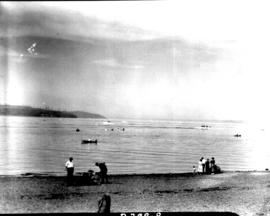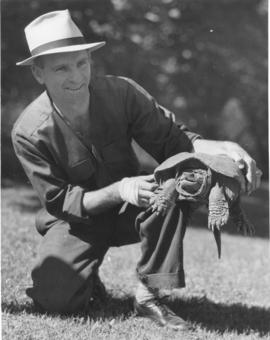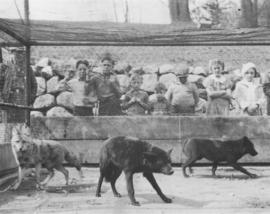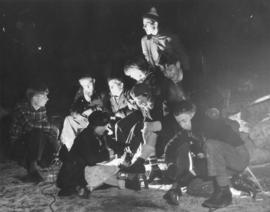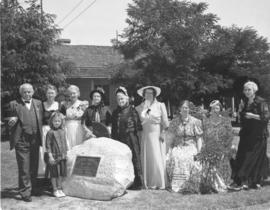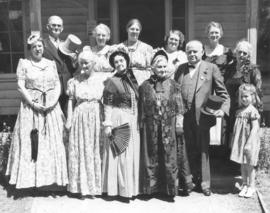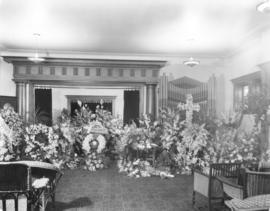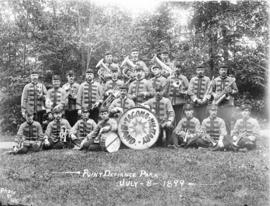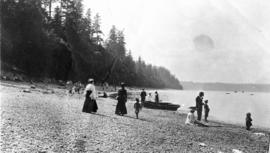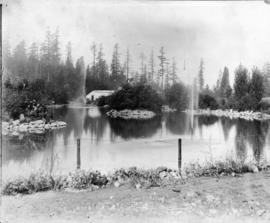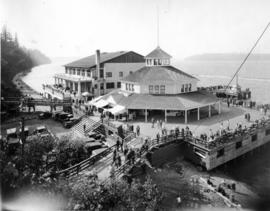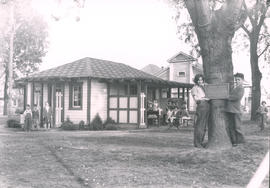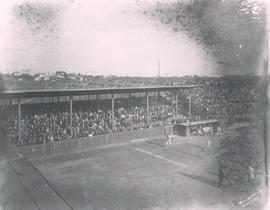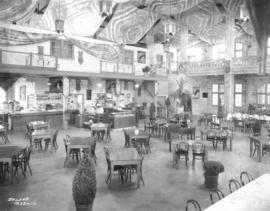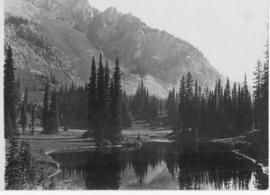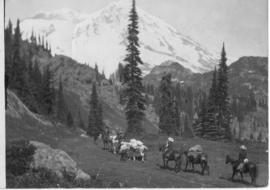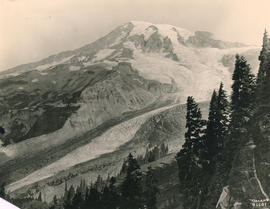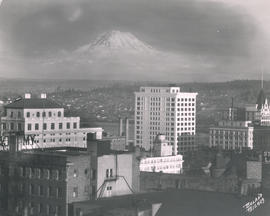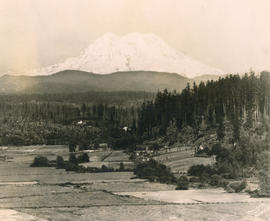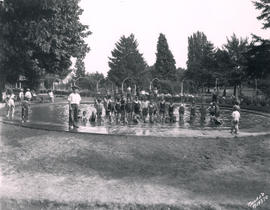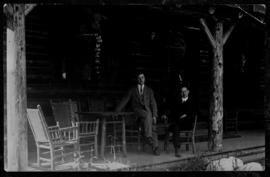Cold weather kept an icy grip on Tacoma in early January of 1937. Temperatures hovered around 15 degrees in town for several days, freezing the water in Wright Park's swan pond. By the time these nine youngsters had laced up their skates for a little night skating the temperatures had already climbed to about 32 degrees and snow was in the forecast. From left to right: Burrell Bresemann, Will LaPoint, Ray Hall, Don Heselwood, Shirley Quinn, Johanna Pitzl, Jack Alvord, Ed Carlin and Bob Taylor (standing). Although a teenager had nearly drowned when he fell through the ice at the swan pond several days earlier, ice skaters were using the pond again in apparent safety. (T.Times, 1/9/1937, p. 1; T.Times 1-7-37, p. 1-article on cold weather).
Wright Park (Tacoma); Children--Tacoma--1930-1940; Ice skating--Tacoma--1930-1940; Bresemann, Burrell; LaPoint, Will; Hall, Ray; Heselwood, Don; Quinn, Shirley; Pitzl, Johanna; Alvord, Jack; Carlin, Ed; Taylor, Bob;
